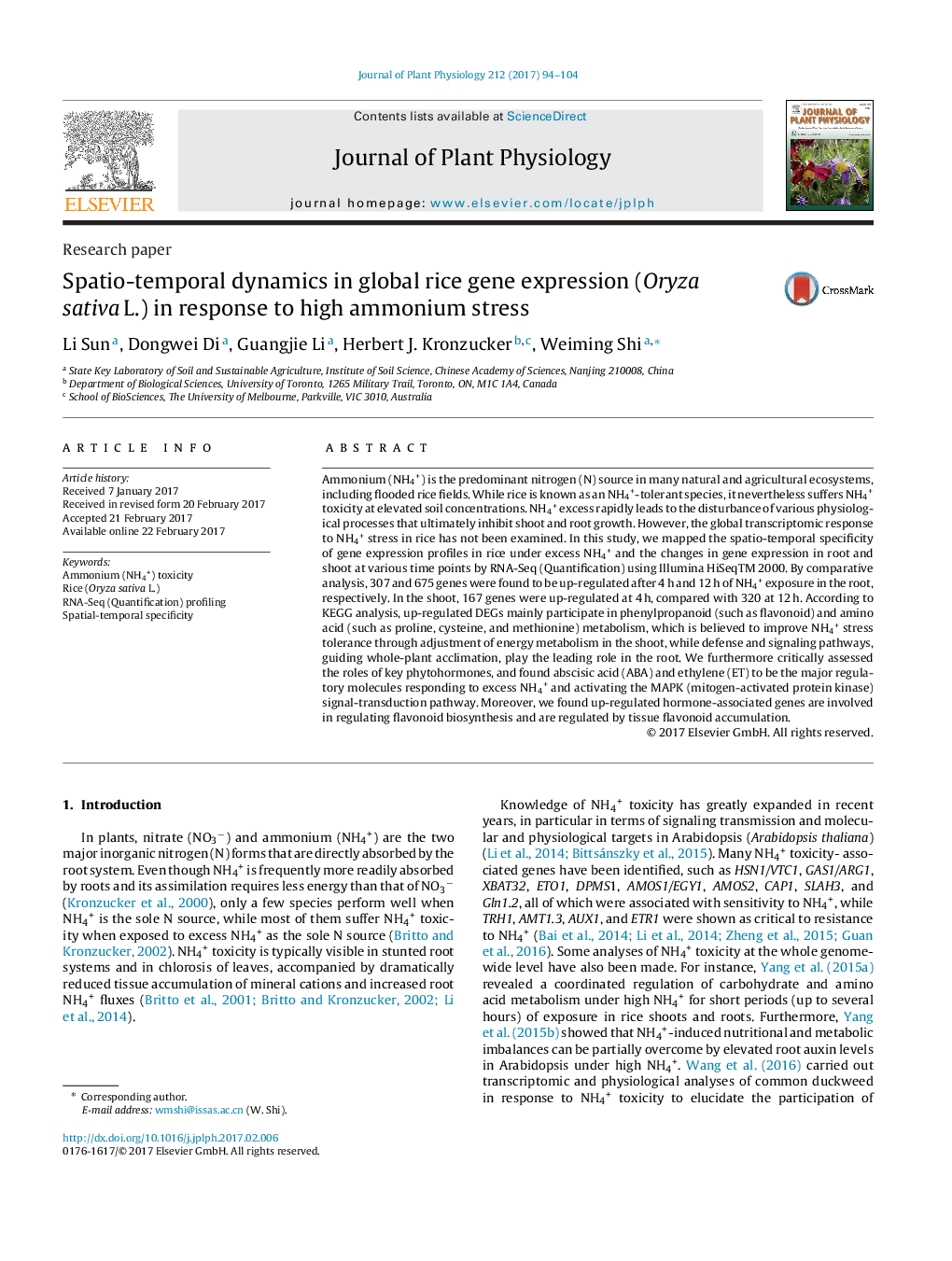| کد مقاله | کد نشریه | سال انتشار | مقاله انگلیسی | نسخه تمام متن |
|---|---|---|---|---|
| 5518099 | 1543866 | 2017 | 11 صفحه PDF | دانلود رایگان |

Ammonium (NH4+) is the predominant nitrogen (N) source in many natural and agricultural ecosystems, including flooded rice fields. While rice is known as an NH4+-tolerant species, it nevertheless suffers NH4+ toxicity at elevated soil concentrations. NH4+ excess rapidly leads to the disturbance of various physiological processes that ultimately inhibit shoot and root growth. However, the global transcriptomic response to NH4+ stress in rice has not been examined. In this study, we mapped the spatio-temporal specificity of gene expression profiles in rice under excess NH4+ and the changes in gene expression in root and shoot at various time points by RNA-Seq (Quantification) using Illumina HiSeqTM 2000. By comparative analysis, 307 and 675 genes were found to be up-regulated after 4Â h and 12Â h of NH4+ exposure in the root, respectively. In the shoot, 167 genes were up-regulated at 4Â h, compared with 320 at 12Â h. According to KEGG analysis, up-regulated DEGs mainly participate in phenylpropanoid (such as flavonoid) and amino acid (such as proline, cysteine, and methionine) metabolism, which is believed to improve NH4+ stress tolerance through adjustment of energy metabolism in the shoot, while defense and signaling pathways, guiding whole-plant acclimation, play the leading role in the root. We furthermore critically assessed the roles of key phytohormones, and found abscisic acid (ABA) and ethylene (ET) to be the major regulatory molecules responding to excess NH4+ and activating the MAPK (mitogen-activated protein kinase) signal-transduction pathway. Moreover, we found up-regulated hormone-associated genes are involved in regulating flavonoid biosynthesis and are regulated by tissue flavonoid accumulation.
Journal: Journal of Plant Physiology - Volume 212, May 2017, Pages 94-104